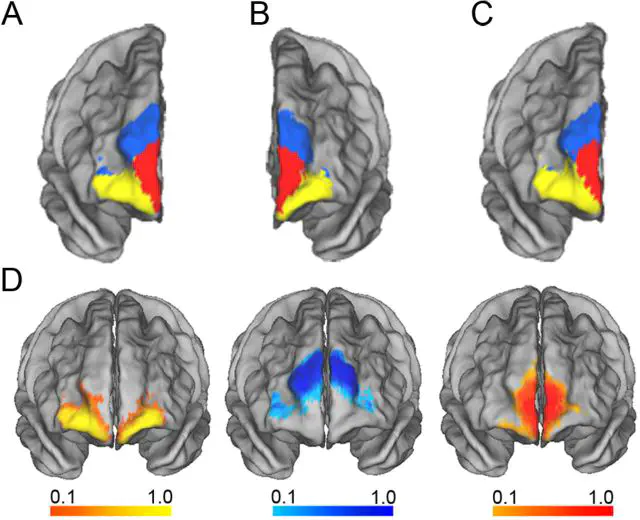 FP parcellation
FP parcellationAbstract
The human frontal pole (FP) approximately corresponds to Brodmann’s area 10 and is a highly differentiated cortical area with unique cytoarchitectonic characteristics.However,itsfunctional diversityis highly suggestive ofthe existence offunctional subregions. Based on anatomical connection patterns derived from diffusion tensor imaging data, we applied a spectral clustering algorithm to parcellate the human right FP into orbital (FPo), lateral (FPl), and medial (FPm) subregions. This parcellation scheme was validated by corresponding analyses of the left FP and right FP in another independent dataset. Both visual observation and quantitative comparison of the anatomical connection patterns of the three FP subregions revealed that the FPo showed greater connection probabilities to brain regions of the social emotion network (SEN), including the orbitofrontal cortex, temporal pole, and amygdala, the FPl showed stronger connections to the dorsolateral prefrontal cortex of the cognitive processing network (CPN), and the FPm showed stronger connections to brain areas of the default mode network (DMN), including the anterior cingulate cortex and medial prefrontal cortex. We further analyzed the restingstatefunctional connectivity patterns ofthethree FP subregions. Consistent withthefindings of anatomical connection analyses,the FPo was functionally correlated with the SEN, the FPl was correlated with the CPN, and the FPm was correlated with the DMN. These findings suggest that the human FP includes three separable subregions with different anatomical and functional connectivity patterns and that these subregions are involved in different brain functional networks and serve different functions.